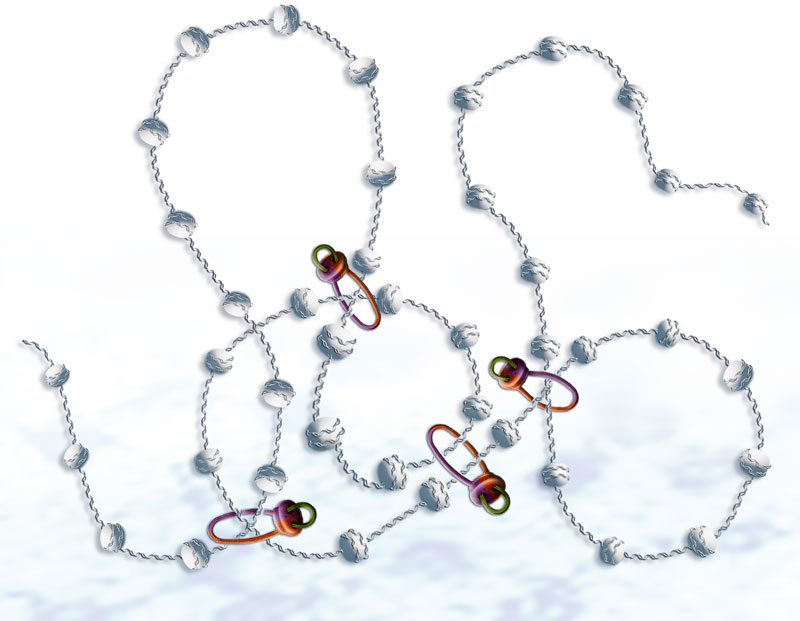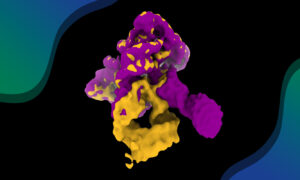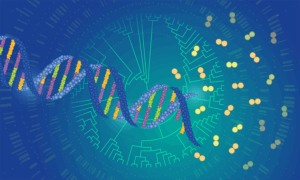Keeping it together
‘Cord-stopper’ protein complex makes chromosomes easier to move

As any rock-climber knows, trailing a long length of rope behind you is not easy. A dangling length of rope is unwieldy and hard to manoeuvre, and can get tangled up or stuck on an outcropping. Cells face the same problem when dragging chromosomes apart during cell division. The chromosomes are pulled by their middle – the centromere – their arms trailing along behind. Just like climbers carry their rope coiled up, cells make the chromosome arms easier to pull by folding them into short, stiffer structures. In a study published online today in Nature Structural and Molecular Biology, scientists at the European Molecular Biology Laboratory (EMBL) in Heidelberg, Germany, have discovered how a protein complex called condensin keeps chromosome arms folded and easy-to-transport, potentially acting as a cord-stopper.
“This is the first step towards understanding how the largest molecule in the cell can be organised into something that can be handled during cell division” says Christian Häring, who led the work.
Sara Cuylen, a PhD student in Häring’s lab, first discovered that, in the test tube, condensin forms a ring around the DNA in a chromosome arm. After confirming that it does the same in live yeast cells, Cuylen cut the condensin rings open. She found that the centromeres still moved as expected, but the chromosome arms lagged behind, preventing the cell from dividing properly. It seems the condensin ring encircles two different regions of a chromosome arm, like a cord-stopper bringing together a looped length of rope. The condensin ring can slide along the DNA ‘rope’ to some extent, but the EMBL scientists also found evidence that, like a cord-stopper when the button is released, condensin may also be able to stop sliding, attaching itself to specific parts of the chromosome arm.
Next, Häring and colleagues plan to investigate just how chromosome arms are looped into and released from condensin rings. The whole process is likely to be the same in our own cells, the scientists say, as the overall architecture of our condensin and chromosomes is the same as yeast’s.



